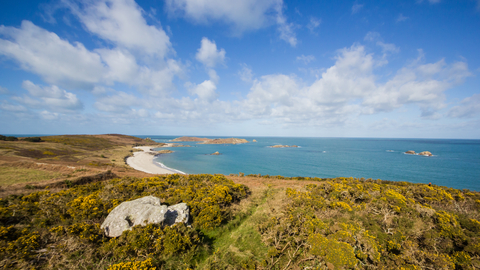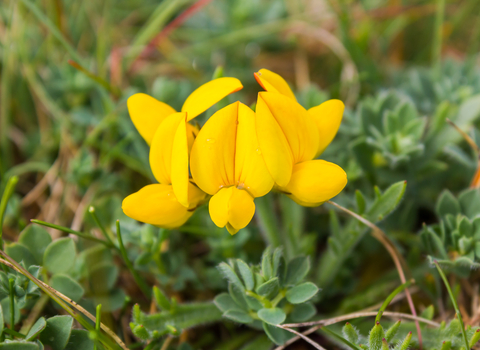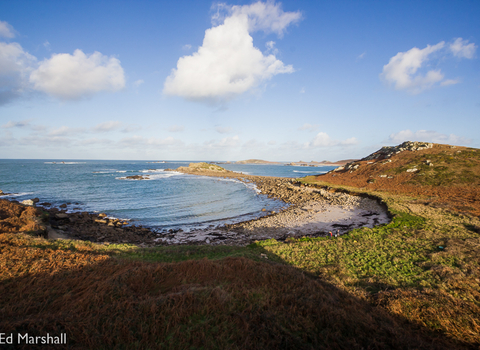
Plains and Great Bay
Know before you go
Dogs
When to visit
Opening times
Open year roundBest time to visit
Spring & SummerAbout the reserve
Great Bay, St Martin's, is one of the most arresting views and bays on the Isles of Scilly. East-facing, it is protected from the prevailing winds by the main island to the south and White Island to the west. This natural protection has helped the site to accrete sand, which over millennia has developed into a dune system. This has resulted in a great example of coastal succession of vegetation communities, with species like sea sandwort, frosted orache and sea rocket.
The developing foredune progresses into sand couch and sea holly, and then into marram grass. There are also uncommon species such as sea and Portland spurge. Beyond these fixed dunes, you can see the change into a rich dune grassland with species such thrift, red fescue, sand sedge, sea stork’s-bill and eyebright, as well as orange bird’s-foot and the rare western ramping fumitory. As you move up the hill the landscape transforms into a beautiful heathland, dominated by heather and bell heather, followed at the very top by clumps of western and European Gorse.
In the spring and summer, this is a brilliant spot to admire butterflies, bees and other insects making the most of the abundant pollen sources. Listen for stonechats 'chatting' to one another, look for seabirds along the coast or oystercatchers along the beaches and big flocks of swallows swooping along the beaches. On warm, sunny days, you might hear the gorse popping open.
In some areas of dunes, the marram grass and heathland have been invaded by New Zealand flax. This plant has the enviable title as being the world’s strongest natural fibre, so removing with a chainsaw takes a lot of time and patience, something that our rangers have plenty of and are working to remove. We are also controlling the encroaching European gorse, bracken and bramble across the site. We are also working with local farmers Ben and Zoe Julian of Churchtown Farm to graze the grassland and heathland.



